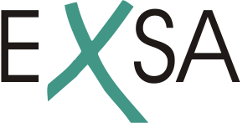
Macro X-ray fluorescence (MA-XRF) scanning is a well-established imaging technique allowing to visualize the distribution of chemical elements at and below the surface of paintings. Starting from the first experiment in 2008 performed with synchrotron radiation, MA-XRF has been optimized and translated in mobile instruments to be used in museums, archeological sites and conservation studio. It is now one of the hyperspectral methods for non-invasive analysis that is used by art-historians, art-conservators and scientists. Often, the information on the distribution of pigments it reveals on the macroscopic scale is combined with that obtained from microscopic (X-ray or other) analysis of paint stratigraphies.
This workshop aims to bring together scholars having or seeking to gain experience with MA-XRF scanning and related methods of analysis of works of art. At the meeting, the current applications of MA-XRF will be summarized. The advantages and limitations of using MA-XRF and comparable methods of hyperspectral analysis in combination with micro-analytical investigations will be a focal point of the discussions.
The program is now available!
Invited lectures
- David Thurrowgood (Queen Victoria Museum and Art Gallery, Launceston, Tasmania, Australia)
- John Delaney (National Gallery of Art, Washington DC, USA)
- Piet Van Espen (Antwerp University, Belgium)
TUTORIAL DAY (under programming)
A tutorial day on MA-XRF with no additional costs for participants to the MA-XRF workshop is under programming for Sunday 24 September 2017. A number of tutorial lectures, demonstrations and hands-on activities related to processing of MA-XRF Datasets will take place at the International Centre for Theoretical Physics (ICTP), Trieste.
Topics to be addressed in the tutorial lectures/hands-on activities include:
- X-ray physics relevant for a better understanding of MA-XRF (e.g. XRF sampling depth, XRF emission lines, X-ray absorption)
- Evaluation of large XRF spectral data sets using tools such as PyMCA and other packages
- Stitching of multiple MA-XRF maps and exploiting inter-element correlation graphs
- Combining MA-XRF with other hyperspectral data sets
Tutors will include: A. Karydas (Democritos, Athens), R. Tagle (Bruker, Berlin), P. Van Espen (University of Antwerp), M. Alfeld (UPMC, Paris), J. Delaney (NGA, Washington DC)
Abstract Submissions
Authors of accepted contributions are invited to submit manuscripts for publication in a special issue of X-ray Spectrometry Registration and fee |
|
|
Scientific Organizing Committee |
In cooperation with the International Atomic Agency




